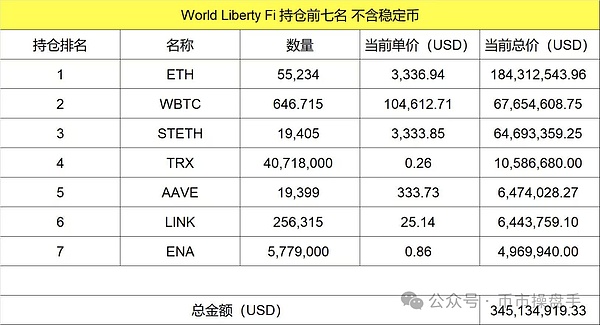
On his third day as president, Trump finally responded to the issue of Bitcoin reserves. On January 23, he signed an executive order aimed at optimizing cryptocurrency regulation and ensuring that the United States maintains its global leadership in the field of digital assets. In order to fulfill his promise to establish a Bitcoin reserve, Trump instructed the White House encryption director, the Secretary of the Treasury, the Chairman of the Securities Regulatory Commission and other relevant department heads to form a special working group to evaluate the feasibility of establishing a digital asset reserve and formulate relevant standards. Additionally, the executive order states that the digital assets in the reserve can come from assets seized in law enforcement actions.
After the executive order is issued, Polymarket predicts that Trump will achieve Bitcoin reserves within 100 days The probability increases from 30% to 40%. At the same time, the price of Bitcoin quickly surged from US$102,500 to US$106,000, with the largest intraday increase reaching 3.4%. Unfortunately, however, all gains were wiped out within the next 6 hours. The main reason for the lukewarm market response is that establishing a long-term Bitcoin reserve mechanism requires a solid legal basis, which means that Congress needs to introduce supporting support bills. In addition, the funding sources of the reserve plan involve budget and financing, which also require congressional approval. As we all know, the decision-making efficiency of the U.S. Congress is low, and the interest demands of various forces are complex, making it almost difficult to reach consensus in the short term. The most typical example is META's global payment system Libra, which ultimately died in Congressional debate.
Due to the many challenges faced in establishing a long-term Bitcoin reserve mechanism, Trump prefers to pursue a symbolic reserve plan: transferring the Bitcoins held by the U.S. Marshals Service to special funds under the Treasury Department (such as the Exchange Stabilization Fund) or fiscal plans, and announcing that they will not be sold for a certain period in the future. Although the transfer of Bitcoin may involve the fiscal budget, it will not be difficult to pass the matter in the Republican-dominated Congress.
Previously, many institutions were optimistic about the trend of Bitcoin in 2025 Forecasts are primarily based on assumptions about participation. If Bitcoin can occupy the same proportion of U.S. reserves (5%-7%) and pension funds (1%-2%) as gold, then the crypto market willThe incremental inflow will reach approximately $50 billion, which will push the price of Bitcoin above $150,000. Now that the expectation of increasing holdings has failed, Bitcoin's rise in 2025 will be greatly reduced. This is why we previously believed that this year's rise may only be 30% to 40%. ($122,000-$130,000)
Although Trump 1 The new encryption policy on March 23 is quite satisfactory, but the changes in some expressions do reveal new opportunities. For example, the expansion of the State Reserve’s goal from Bitcoin to the entire digital asset field will undoubtedly be a major benefit to the ALTS token. At present, the ALTS token most likely to be included in the state reserve is ETH. The main reasons are as follows: 1. ETH is the The second largest crypto asset held (53,900 pieces), it is very convenient to directly transfer it to the State Reserve. At the same time, Ethereum is the second spot ETF traded on the New York Stock Exchange after Bitcoin, and has a sound compliance foundation; 2. Trump The Pu family's WLFI has recently purchased ETH several times in a row. ETH and stETH account for 72% of the portfolio's holdings. This positive layout seems to have grasped some kind of benefit in advance.
Recently, the market has launched a movement to save Ethereum, and founders of well-known projects such as Lido, Curve, and Aave have joined the discussion. Although community members' views varied, their suggestions consistently focused on three areas. First of all, Ethereum should strengthen the construction of L1 and upgrade its infrastructure to ensure that it can compete with high-performance public chains such as SOL and SUI in terms of cost and efficiency. Secondly, reduce the blood sucking of L2 to L1, strengthen the binding between L2 and L1, and increase the application scenarios of ETH in L2. Finally, reform the Ethereum Fund, eliminate inefficient departments, formulate attractive incentive mechanisms, change the past "Buddhist" status, and add a window for external marketing.
Under pressure from the community, Vitalik, who has been practicing Tai Chi Finally expressed its position: It still supports the L2 expansion plan, but will impose a "toll" on L2. In the past, a large number of L2 projects have been promoting the de-Ethereumization of L2 while enjoying the security guarantee of L1. For example, poaching projects on the Ethereum mainnet and reducing the mortgage and consumption of ETH in L2 application fieldsscene. The most typical example is that many L2 projects have gradually replaced the location of ETH as L2 processing nodes and network GAS. This greatly weakens the influence of Ethereum in the ecology. A large number of valuation of billions of dollars in the governance tokens with a large number of dollars. In the era of L2 high -speed expansion, ETH is more like a decentralized central settlement bank, which is completely reasonable to charge a channel fee or membership fee to the membership of the member unit. In short, the coordination mechanism of rebuilding L1 and L2 has become the easiest and most effective way to boost the fundamentals of Ethereum.
So far, I still think that Ethereum has been rescued successfully It is very likely, after all, the core competitiveness of decentralization and ecology has not lost. With the gradual landing of the Coco Ethereum ETF, the mixed ETF, and the National Reserve Ethereum, Ethereum is still expected to usher in a new round of incremental buying.











